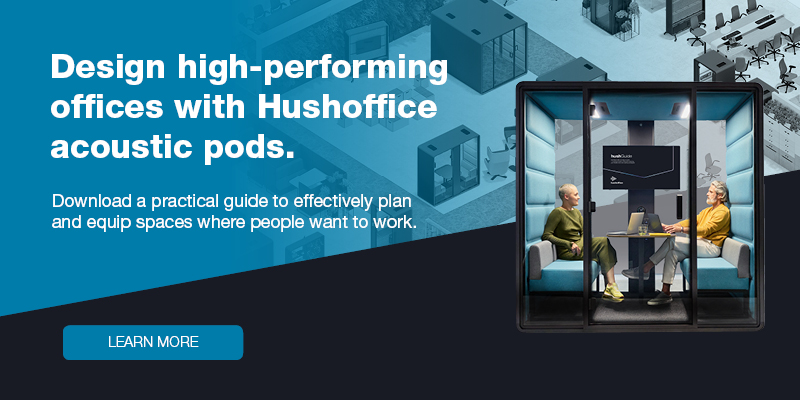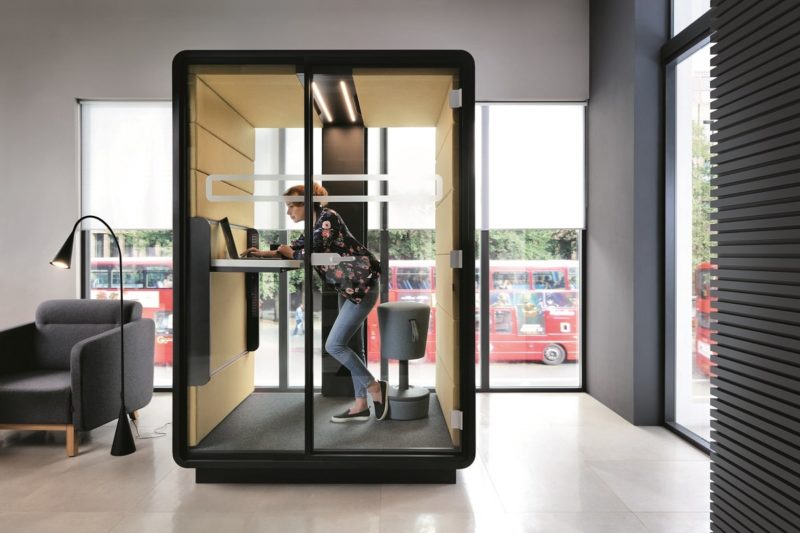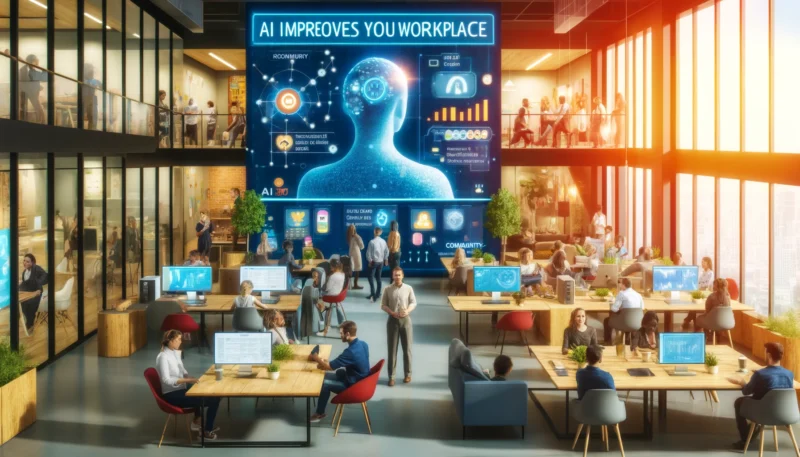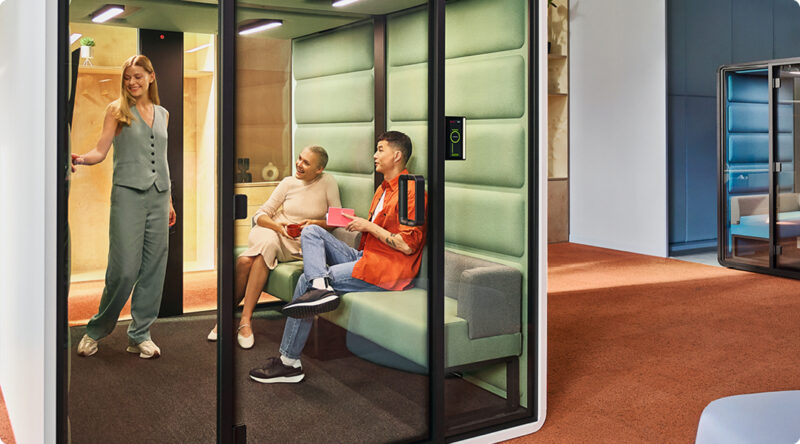Managing digital stress in a hybrid workplace
- Posted on: 4 December 2023
- By: Hushoffice Team
Rapid technological development, information overload, and the demand for constant availability online may cause considerable stress for your workers. Without effective measures, it’s a struggle to withstand the constant pressure of staying connected. Acoustic office booths can be a solution, offering a noise-free environment and mental retreat whenever necessary.
Managing digital stress in a hybrid workplace
Digital stress refers to the feeling of anxiety arising from regular and excessive technology use. It is stronger in remote work environments where workers spend more time on interaction with screens than with other people. Digital stress may take the form of techno-overload (also referred to as technostress), techno-insecurity, and techno-evasion.
To limit digital stress, workers need to be digitally mindful. That’s why you should encourage your workers to technology-free meetings, emphasise the need for regular digital detox during their weekends and holidays, and establish non-negotiable turn-off time in the evenings. Additionally, you can define strict weekend rules concerning email correspondence and disable redundant push notifications.
Hushoffice pods are a perfect answer to the digital stress problem. They are quiet sanctuaries, protecting from auditory distractions, visual activities, and general sensory overload that increase stress levels and hinder employee performance in the open-space office.
Remote work and digital stress as new 21st-century challenges
Digital stress refers to the feeling of anxiety arising from technology use. In today’s working world, it is common that workers spend more time on interaction with screens than with other people. This excessive use of digital devices results in eye strain, headaches, and other health-related issues. And what’s even worse – it is socially isolating.
Remote work is based on a considerable amount of digital information, such as emails, messages, documents, or video conferences.
Managing such information overload is a real challenge, often leading to metal fatigue. Especially, in situations when workers don’t have an opportunity to regularly meet with their supervisors or colleagues to gain a wider perspective.
What actually is digital stress? How does it affect us?
Digital stress, or so-called digital or technology-induced stress, refers to the negative physical and psychological impact of excessive technology and online platform use. It is a relatively new phenomenon that has originated with the technological boom for digital devices and the pressure of constant connectivity, intensified by the growing popularity of remote work.
Psychological consequences may include anxiety, mental overload, and screen addiction.
Physical consequences might be: computer vision syndrome, sleeping problems, and stress-related injuries, such as CTS. In general, chronic digital stress can result in burnout, hindering employee performance and wellness.
The first step is to understand the reasons behind digital stress.
Techno-overload, techno-insecurity, and techno-invasion are all parts of the same problem. Without access to quiet, self-contained spaces, such as the hushTwin work booth, workers in open-plan workspaces can feel overwhelmed by the omnipresent clicking sounds, mobile ringtones, and the overall dynamics of the office.
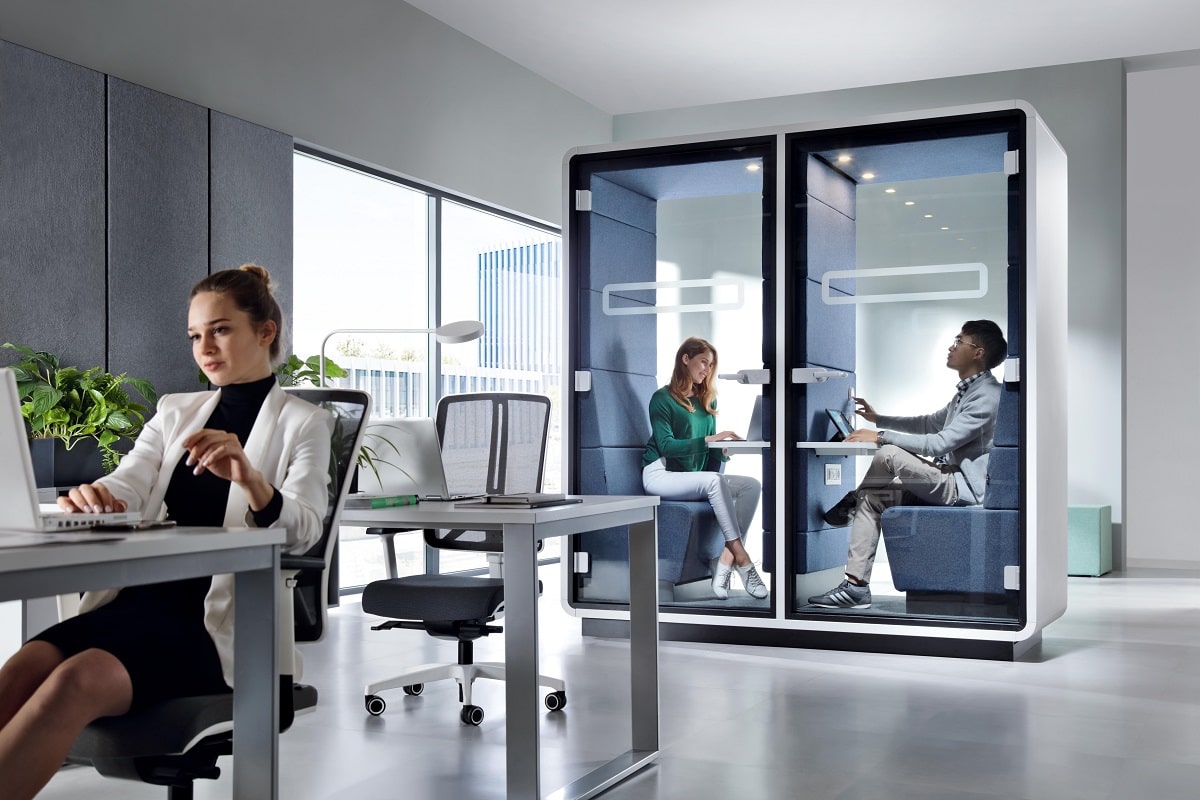
Techno-overload or technostress…
According to Wikipedia, “People experience technostress when they cannot adapt to or cope with information technologies in a healthy manner.” The pressure to stay connected and share updates round the clock results in employees feeling forced to respond to work-related issues immediately, which leads to habitual multitasking.
Being constantly connected creates an impression of being always reachable, and that can result in anxiety.
Excessive participation in video meetings, an indispensable part of remote work, may lead to the so-called “Zoom fatigue” or digital exhaustion. For example, attending back-to-back video meetings can be mentally draining as it requires undisturbed focus on the screen for prolonged periods.
Scientific research confirms that technostress does exist.
Predictably, workers who lack control over their working time or are not used to working remotely experience greater techno-fatigue. Sadly, this group of employees has to deal with a wide range of adverse effects related to their occupational health, such as reduced productivity.
Techno-insecurity…
Techno-insecurity refers to the feeling of anxiety employees may experience when they worry about losing their job to more tech-savvy individuals. It is proven to increase moral disengagement, which results in the loss of ethical standards. As shared morals are crucial to establish the atmosphere of trust and respect, techno-insecurity can have serious consequences in the workplace.
Techno-invasion disrupts work-life balance…
Techno-invasion refers to the feeling of being always available online, caused by constant technological accessibility anytime, anywhere. You may even notice that, for some people, the working day never ends. When you feel overwhelmed or overstimulated, private one-person booths, such as hushHybrid can work wonders by giving you a temporary break from the surrounding noise.

Setting boundaries is a necessity in remote-work environments.
Techno-invasion makes workers feel that their space is frequently violated. If the problem is not addressed appropriately, the line dividing work and personal life can get blurred in remote settings. This can be particularly stressful for workers who never get genuine rest and feel always “on”.
Read: Digital mindfulness is a matter of well-being and find out more about our greenWall vertical garden wall.
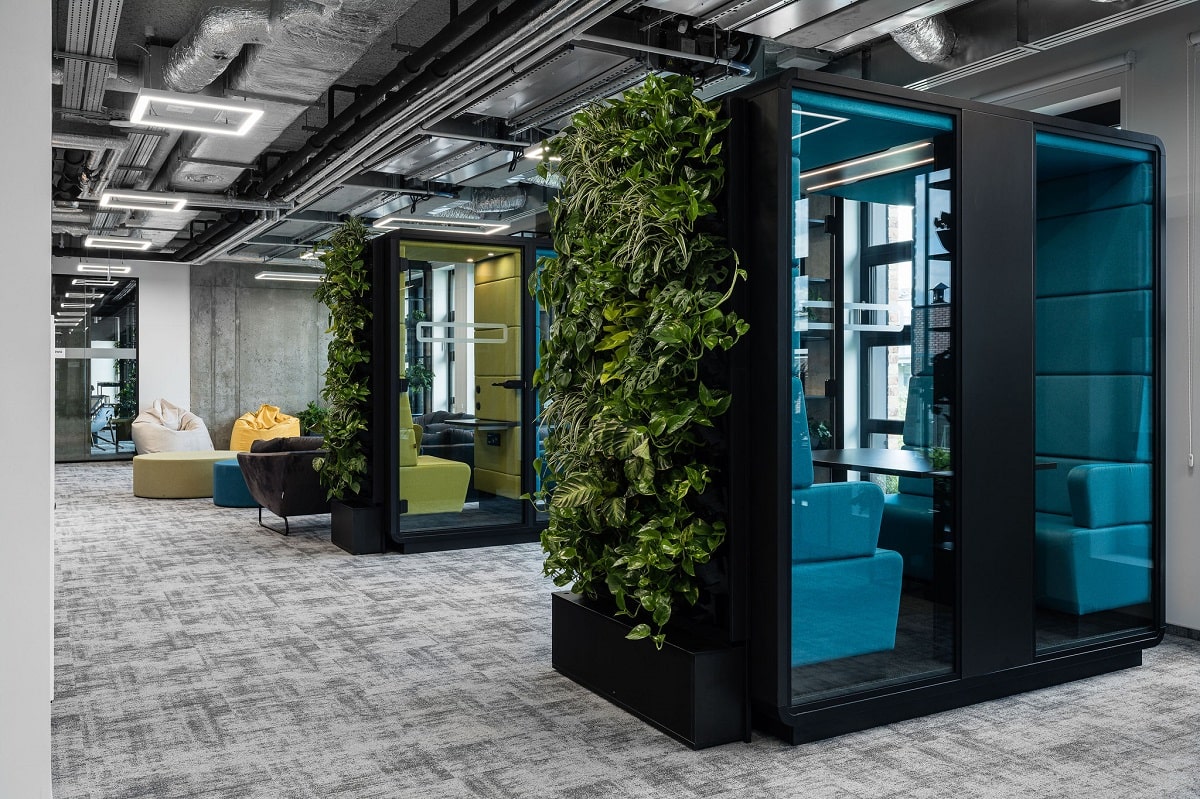
Is online communication a blessing or a curse?
Technology can be seen as a double-edged sword, bringing either comfort or anxiety, depending on how you wield it. On one hand, it is highly convenient, allowing people to connect, cooperate, and obtain information from all over the world. It facilitates remote work, helps establish international partnerships, and provides an infinite source of knowledge. On the other hand, there are some serious negative consequences, such as digital stress, information overload, or mental and physical health issues that we cannot ignore
– says Mateusz Barczyk, Senior Brand Manager, Hushoffice.
When used reasonably, online communication is a powerful tool. Striking a balance, making an intentional use of technology, and setting clear boundaries may help workers respond to technology-related challenges, thereby unlocking the full potential of digital work
Dealing with employee overstimulation is crucial.
It is a must for both employees and employers to set clear boundaries, encourage taking regular breaks, and promote healthy practices. Implementing dependable strategies that address digital stress can help maintain the well-being of hybrid-working employees (and make a remote working model benefit everyone).
Acoustic booths make an ideal noise-free working environment
Pods are an effective answer to the digital stress problem. They function as quiet sanctuaries, protecting their users from the office hubbub, visual distractions and overstimulation that increase employees’ stress levels and hinder performance in the open-plan offices. For example, if you are looking for a booth for larger team meetings, consider our hushMeet.L
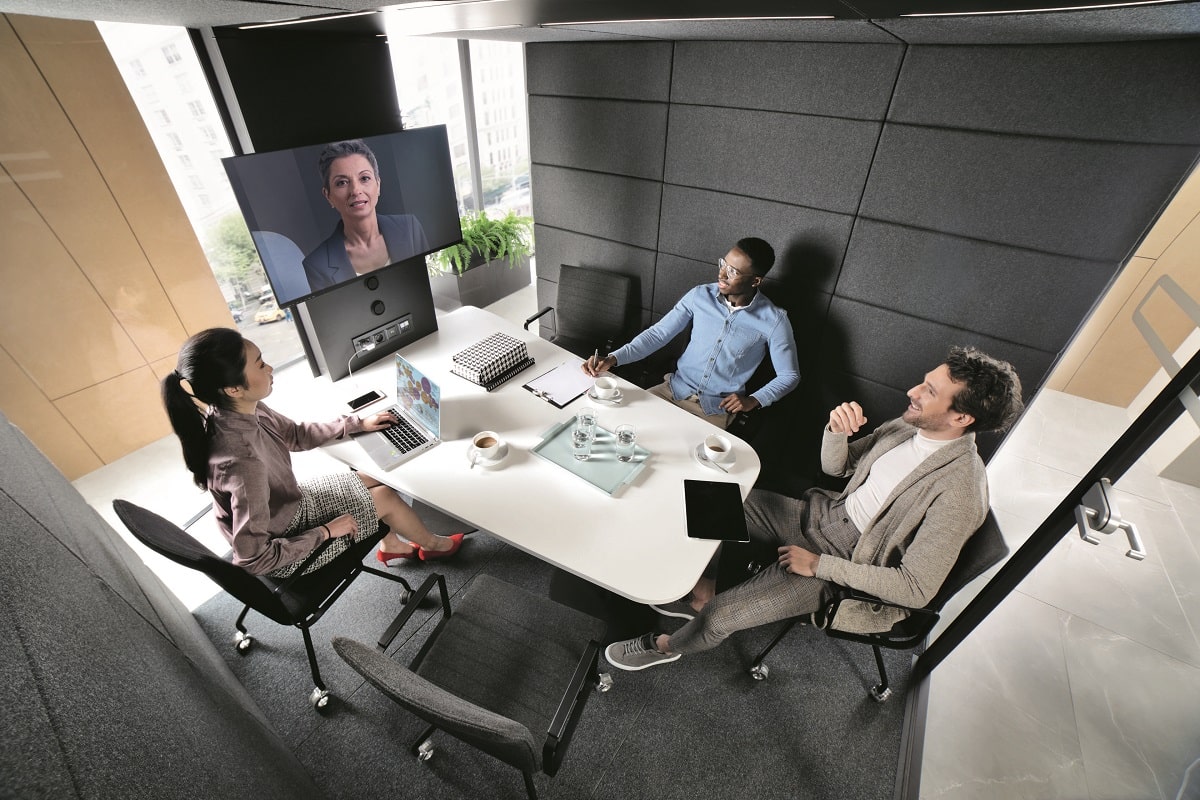
Privacy and silence are a crucial part of the workplace.
Private, quiet pods, such as hushMeet enable confidential discussions, sensitive information management, or independent, focused work without the feeling of being overheard or observed. Additionally, a space such as hushMeet can function as a retreat for momentary breaks or even meditation.
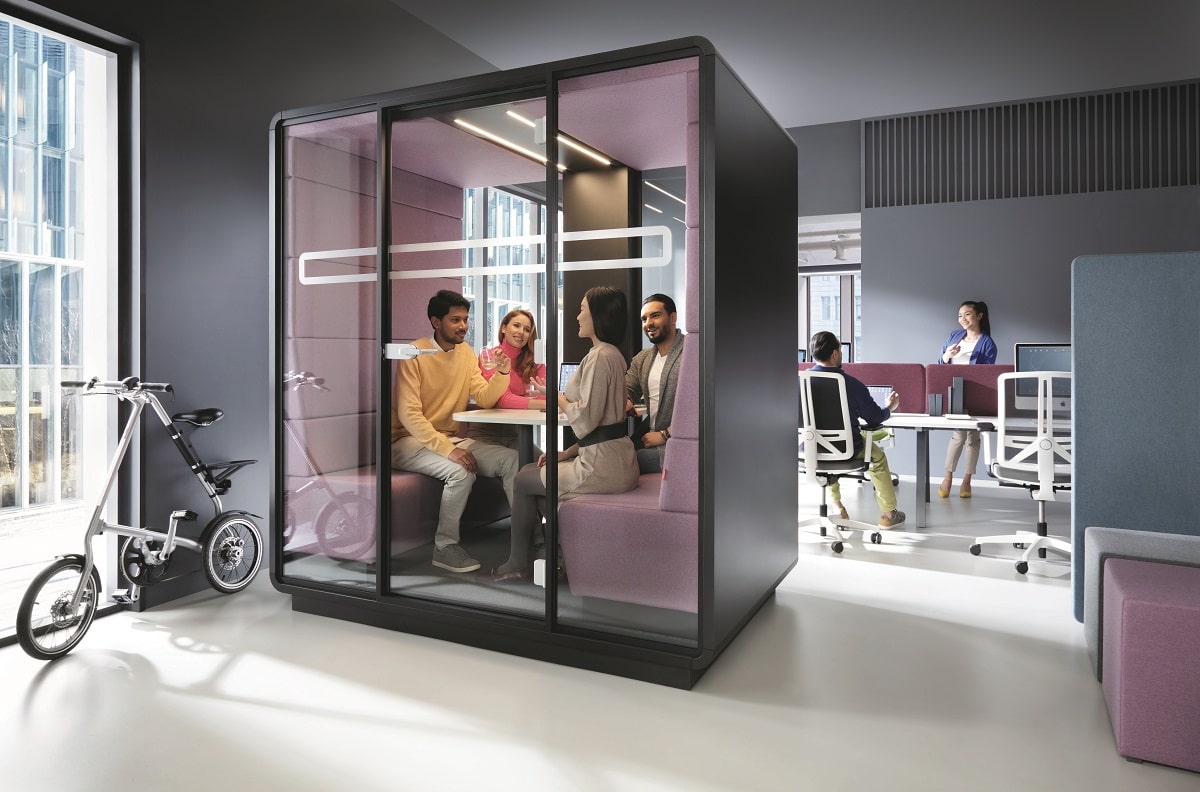
In a wider workspace perspective, private, quiet working environments, such as pods, help combat sensory overload, simultaneously boosting employee well-being and creating a more balanced and productive work experience
– says Mateusz Barczyk, Senior Brand Manager, Hushoffice.
Acoustic pods foster concentration by reducing typical open-office distractions.
They are carefully designed environments layered with top-quality sound-dampening materials ensuring a noise-free workspace. What’s more, they safeguard visual privacy by blocking out potential visual distractions from the floor. Once inside the pod, you can fully focus on your tasks without the discomfort of feeling observed.
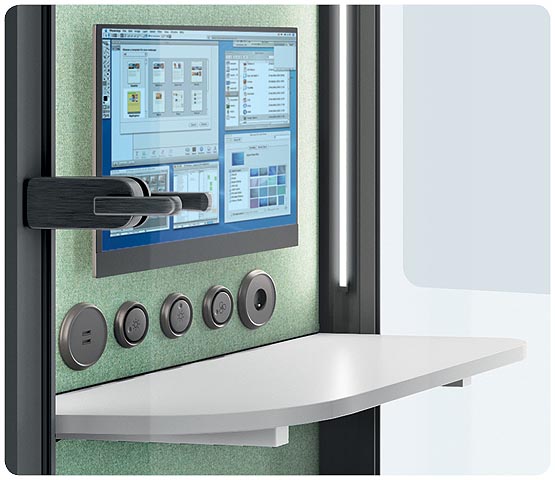
Pods grant employees more autonomy over their resources (through control over their working environment).
Customisable lighting used in pods, such as hushPhone, allows you to adjust the illumination of your immediate space to the task you are working on. This can help minimise eye strain and enhance your performance by providing lighting that perfectly matches your needs.
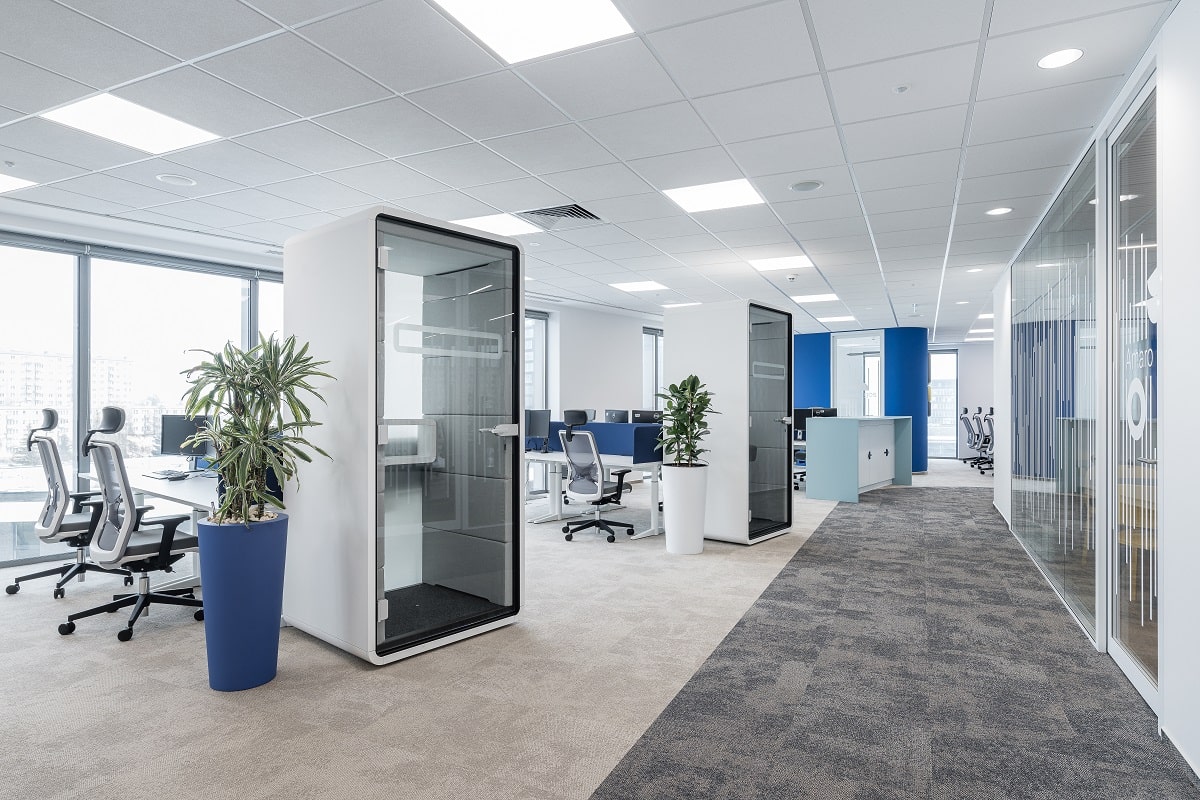
So, can acoustic booths minimise digital stress?
Yes! They function as self-contained, sound-insulated environments protecting their users from the office hubbub. When auditory stressors are reduced to a minimum, the anxiety connected with the omnipresent background noise is eliminated.
In a pod, isolation equals concentration.
Office pods and booths ensure better focus and clarity of mind. Their quiet, peaceful environment contributes to a smoother workflow. The cognitive overload resulting from digital distractions, such as the rings and pings of the devices, is minimised.
Acoustic office booths are designed with comfort in mind.
Office booths, such as hushMeet, come with ergonomically designed furniture, optimal lighting, and ventilation system, creating a cosy, personalised workspace for employees. An opportunity to work in a booth empowers workers by granting them autonomy over their working environment and ensuring complete privacy. As a result, the social pressures typical of open-space workplaces and the discomfort of being constantly watched melt away
– adds Mateusz Barczyk, Senior Brand Manager, Hushoffice.
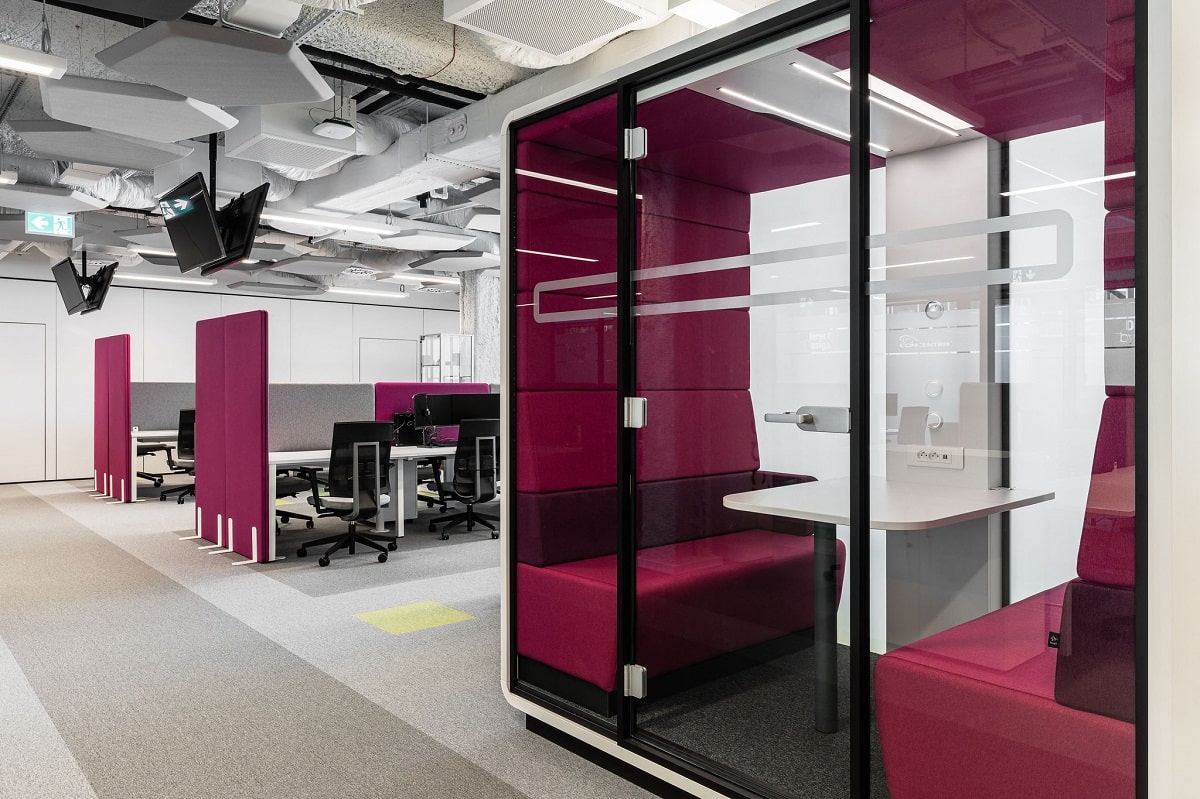
If you want to learn about 9 steps towards digital mindfulness, check out our blog.
Digital well-being means technology supporting employees.
Achieving harmony between humans and their electronic devices is a tricky challenge. It demands continual efforts in design, management, and personal self-discipline. But when you succeed, the result is a rewarding and efficient working environment, and it’s totally worth the effort.
We believe that pods are a solution providing privacy, peace, and quiet. Take a look at the Hushoffice line of acoustic work and meeting pods here.
Managing digital stress in a hybrid workplace – summary
Digital stress refers to the feeling of anxiety arising from regular and excessive technology use. It is stronger in remote work environments where workers spend more time on interaction with screens than with other people. Digital stress may take the form of techno-overload (also referred to as technostress), techno-insecurity, and techno-evasion.
To limit digital stress, workers need to be digitally mindful. That’s why you should encourage your workers to technology-free meetings, emphasise the need for regular digital detox during their weekends and holidays, and establish non-negotiable turn-off time in the evenings. Additionally, you can define strict weekend rules concerning email correspondence and disable redundant push notifications.
Hushoffice pods are a perfect answer to the digital stress problem. They are quiet sanctuaries, protecting from auditory distractions, visual activities, and general sensory overload that increase stress levels and hinder employee performance in the open-space office.
Digital stress – frequently asked questions
What is technostress?
A common type of technostress (or generally, the negative impact of technology on our mental and physical wellness) is the so-called “Zoom fatigue”. It refers to a situation when workers feel mentally exhausted from attending a large number of video calls.
What is techno-invasion?
The term refers to situations when technology in the form of constant notifications, overuse of digital tools, or surveillance negatively impacts workers’ work-life balance, resulting in stress and hindered performance.
What is techno-insecurity?
It refers to the feeling of unease, vulnerability or insecurity employees may experience when they worry about losing their job to more tech-savvy individuals.

